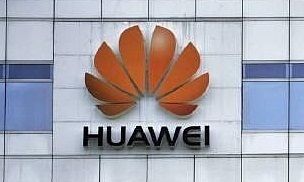Huawei Profits Jump As Smartphones Grow

Chinese manufacturer records 40 percent growth in 2013
Chinese telecoms giant Huawei has increased its operating profits for 2013, it expects to make up to 29.4bn yuan ($4.9bn; £3bn), compared with 20bn yuan in 2012.
Orignally known for its network and telecoms equipment, Huawei has made strides in smartphones, which now make up 23 percent of its revenue, up from 22 percent in 2013. The company also stated that it plans to increase shipments of smartphones up to 80m next year, up from 52m in 2012.
 A growing force
A growing force
Huawei became the world’s third-biggest smartphone manufacturer last year, mainly due to a huge growth in demand from a rapidly developing Chinese market, which contributed around 50 percent of its growth. But the company still trails behind the industry’s big players: according to recent data from Strategy Analytics, Huawei’s global market share of 5.1 percent still means it trails far behind both Samsung (35.2 percent) and Apple (13.4 percent).
Success in developing markets also helped Huawei offset its struggles to compete in markets such as the US and Australia, where it is still regarded with some suspicion as Chinese telecommunications equipment is seen by some as a potential security risk. There have been worries over Huawei’s association with the Chinese government and military, spurred by the fact that the company’s founder, Ren Zhengfei, was a former member of the People’s Liberation Army.
Cathy Meng, the company’s chief financial officer, said that the company was planning to publicly publish details of its employee share ownership programme soon, outlining how the company’s stock is distributed among 70,000 employees. She added that security concerns over Huawei were “groundless” and that the company’s equipment “complies with the industry standards” in all its markets.
Realising that this kind of brand recognition is hardly conducive to good business, Huawei is now attempting to change this view of itself in the West, recently splashing out on a significant booth at CES, where it announced its Mate2 smartphone (pictured above). It has also said that it will lead a push into 5G mobile technology, having last year announced plans to spend $600m (£374m)on developing 5G over the next three years.
Huawei’s telecom infrastructure products have traditionally been its bread and butter, and remain a key area for the company going forward. “In the next decade, more people will spend more time using more applications,” said Ms Meng. “This will generate more need for data and services, thus increasing the momentum of network and device development.”
The company will release audited results in March or April, including net profit which should not be largely different from operating profit, the company said.
What do you know about IT in China? Take our quiz!
 A growing force
A growing force